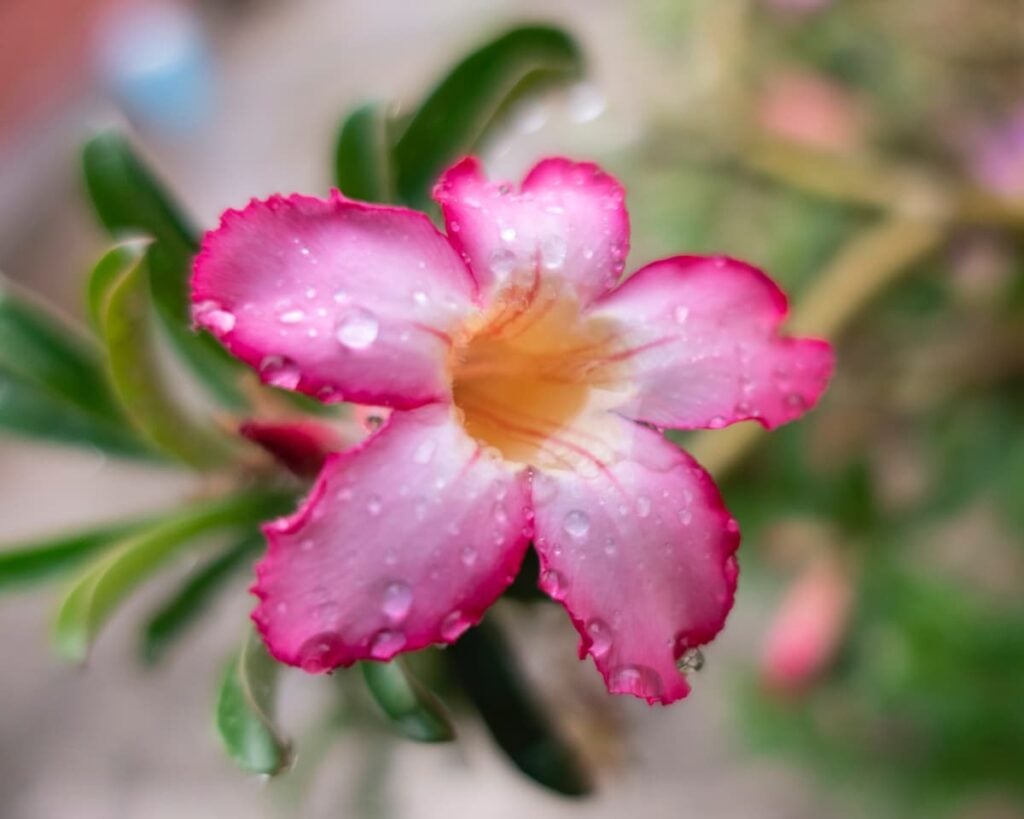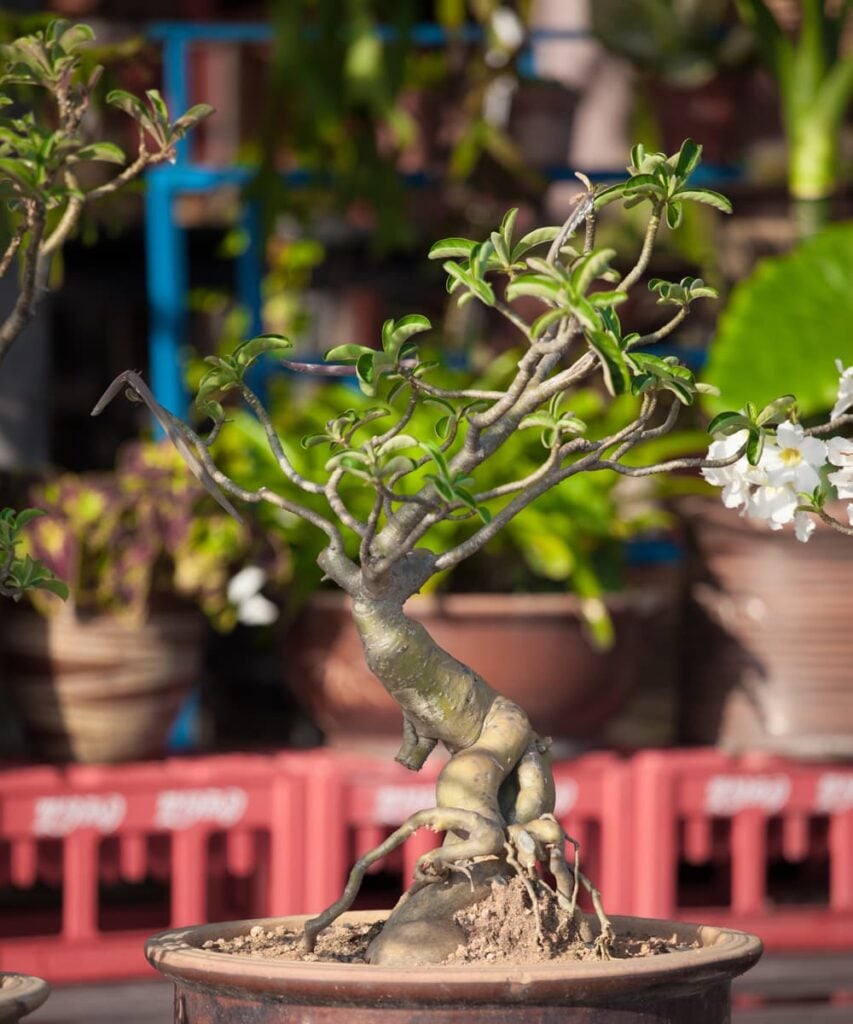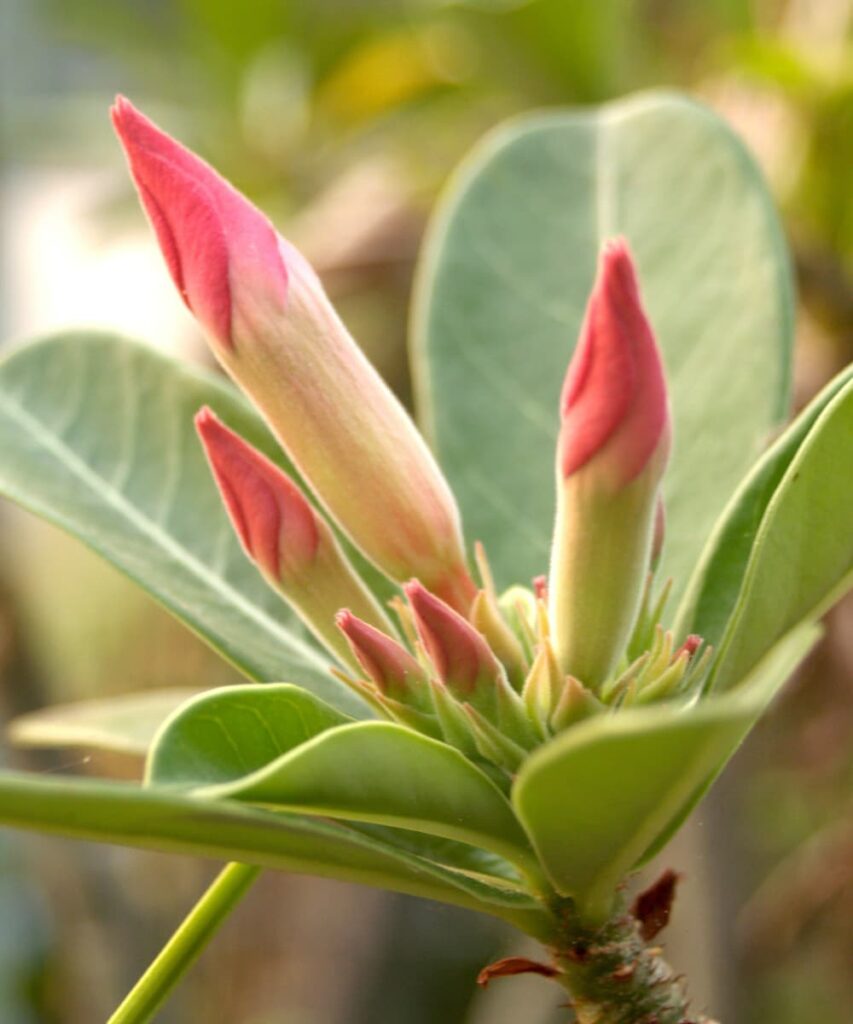Everything You Need to Know about Adenium Care

Adenium is grown as a houseplant in temperate regions. Adeniums are appreciated for their colourful flowers, but also for their unusual, thick caudices. They can be grown for many years in a pot and are commonly used for bonsai. Let us discuss Adenium care. Check out our Adenium collection.
Adenium Care
Adenium or dessert rose is commonly seen with dark red flowers and with a swollen succulent stem. The plant’s growth depends on a lot of pruning and its variety. But you must be very careful with the sap of the adenium plant. It is poisonous and it should be kept away from pets and children.
Light
Adenium plants require full sunlight for proper growth. If they are in in the shade or not getting proper sunlight, they start to become spindly. They have less vibrant blooms.
Soil
Adenium need a porous and quick draining media like coarse river sand and manure mixed in equal proportion. This mixture holds moisture well. Before the rainy season it is advisable to repot the plants with new soil mixture. This helps in better water drainage during rainy season. Keep in mind, the water should not be too much wet or dry.
Water
Soil moisture is an important part in adenium culture. Adeniums can tolerate higher moisture level without harming the plant., as long as temperatures are warm. Do not over-water adeniums when they are in their inactive growth phase during the winter months. If the soil is kept too moist, root disease can become a problem. When growing adeniums, remember that high temperature and full sun requires more water and cooler temperatures require lesser water.

Temperature and Humidity
As they can tolerate dry conditions, adeniums are well suited for the home environment being able to tolerate quite a big of neglect. Keep temperatures high, preferably above 20° C, although they can take it a bit cooler if grown very dry. Really the hotter, the better, so as a 20° C or higher air temperature is best.
Fertilizer
We recommend a balanced fertiliser with an elevated phosphorus to assist in flower formation. There is a critical balance between too much and too little fertiliser since these plants are sensitive to elevated fertiliser salt levels in the soil. It’s a good idea to periodically leach the soil with clear water by watering until you see water draining out of the bottom of the pot.

Common Problems
- Symptom: Leaf rot
Cause: Over watered - Symptom: Stem roots rot
Cause: Fungus - Symptom: White leaf fungus
Cause: Too much moisture
In general, Adenium is widely developed because it has attractive tree shapes and bonsai shapes. Adenium is a very beautiful plant.
The medicinal benefits are, as a bonsai plant, treating wounds, treating the soles of the feet, taking care of skin beauty, relieving pain, treating toothache, treating ulcers.
Taking care of adenium is not too hard but remember that it should not be over-watered or kept too moist.
Adenium care reference: TheSpruce, HousePlantsExpert
